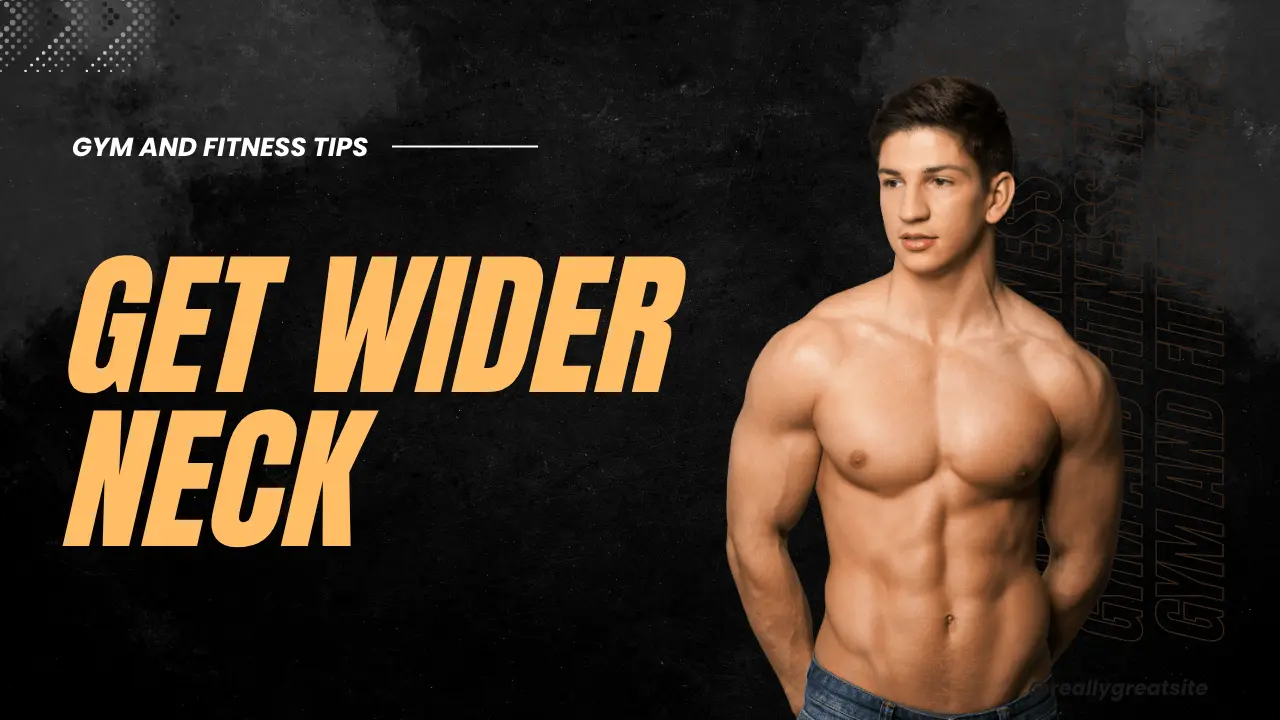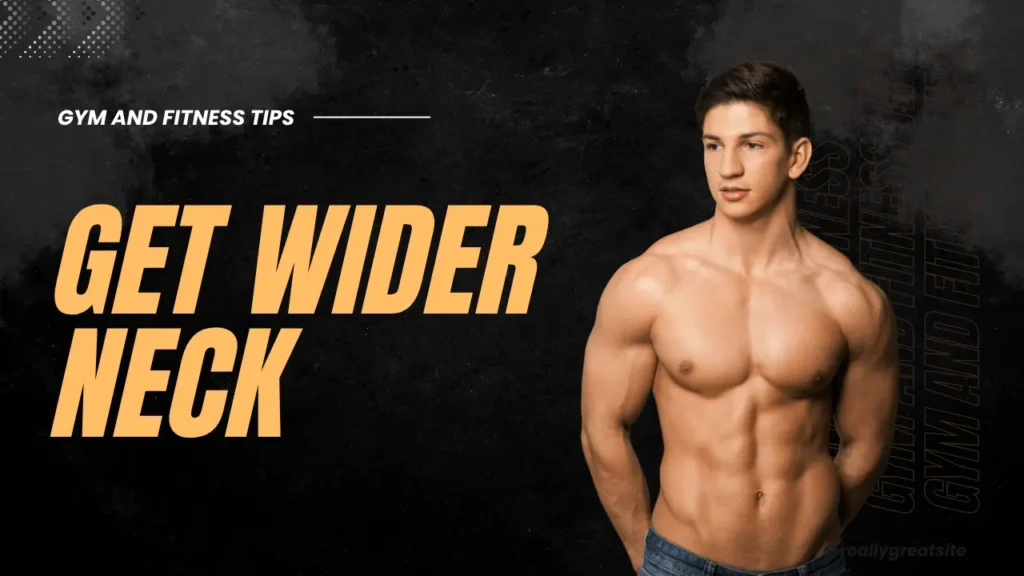How to Get Wider Neck?

The neck is an underrated muscle group. Most gym rats ignore this muscle like it doesn’t exist. But training your neck muscles can dramatically enhance your physique, improve athletic performance, reduce neck pain, and even help in preventing some serious injuries like concussions.
Whether you’re here for aesthetic improvements, sports performance, or pain prevention, this guide covers everything—from why neck training is essential to exactly how to do it safely and effectively.

Why Neck Training Matters
1. Aesthetics: A Strong Neck Elevates Your Entire Look
Probably you have seen before and after neck photos go viral, but if you ever notice, the only difference is the width of the neck. The wider neck enhances your facial features and helps you perceive masculinity. A well-developed neck frames the neck and makes your face appear more defined, structured, and strong. Even actors with naturally thinner necks can look nerdier or less athletic when their neck size is digitally reduced.
I personally saw about a two-inch gain in neck circumference in just one year of consistent training—and the visual difference was night and day.
2. Athletic Performance & Injury Prevention
Many athletes in different types of sports, like football, hockey, MMA, or boxing, train their neck on a regular basis for better resistance to whiplash and a lower risk of concussions.
3. Neck Pain & Headache Relief
A healthy, strong neck helps you get relief from chronic neck pain and tension headaches. If you train these muscles, then it will eventually reduce your daily discomfort caused by posture, desk work, or poor sleep positions.
Neck Muscle Anatomy & Training Angles
The neck is a complex area, and it should be trained from multiple angles for complete development and symmetry of the muscle group.
- Neck Flexion (front of the neck) – targets the sternocleidomastoid
- Neck Extension (back of the neck) – targets deep cervical extensors
- Lateral Flexion – assists with balanced width and stability
- Rotation / Anti-Rotation – great for combat athletes and neck mobility
Pre-Workout Warmup: Essential for Neck Safety
Before you even think about loading weight, do a 2-3 minute dynamic warm-up to avoid injury; it will help to avoid injury.
Quick Neck Warm-Up Sequence:
- 8–10 slow head circles (alternating directions)
- Neck curls (bodyweight) – 10–12 reps
- Side curls (head weight)—10–12 reps per side
- Neck extensions (bodyweight) – 10–12 reps
- Neck curl with shoulder rotation – touch chin to alternating shoulders
- Side-to-side isometric holds
This prehab routine increases blood flow, primes your muscles, and improves your mind-muscle connection.
Best Exercises for Neck Training
1. Neck Curls (Forward Flexion)
Target Area: Sternocleidomastoid (front neck)
How to Do It:
- Lie on a bench with your shoulders on the edge.
- Hold a weight plate against your forehead.
- Lower your head backward, then curl forward as if trying to touch your chin to your chest.
Tips:
- Use a towel or thick padding for comfort.
- Don’t use your arms or abs to cheat.
- Curl your legs under the bench for stability.
Reps: 10–20 per set
Progression: Start light (5–10 lbs) and slowly build up. Some lifters go as high as 45 lbs+ with strict form.
2. Neck Extensions (Back of Neck)
Target Area: Cervical extensors
Basic Version:
- Lie face down on a bench.
- Place a weight plate on the back of your head and extend your neck upward.
Advanced Version:
- Use a *head harness** (e.g., Neck Flex) for greater comfort and adjustable loading.
- Attach plates or resistance bands.
- Perform full ROM extensions, avoiding hyperextension.
Why Head Harness Is Better:
- Better comfort
- Safer heavy loading
- More consistent tension
- Easy setup at home
Reps: 10–20+ per set
Pro Tip: Use higher reps to reduce injury risk and build endurance.
3. Lateral Neck Curls
Target Area: Side of the neck
- Lie on your side with your head hanging off a bench.
- Use just your head weight or hold a small plate.
- Lower your ear toward your shoulder and then raise it back up.
Initially this exercise won’t contribute much to neck width, but it ensures balanced development and may help with posture and daily neck mobility.
4. Neck Rotation / Anti-Rotation
Best For: Fighters, athletes, and mobility
Perform this with just your head weight, or try it with a band attached to a door anchor. Drills will build control and activation in the rotational phase.
Isometric Rotation Hold (Drill):
- Sit upright.
- Slowly rotate your head side to side.
- Pause and hold for 5–10 seconds at each end of the range.
This burns like crazy and works surprisingly well with zero equipment.
Neck Training Tools & Gear
While bodyweight and plate-based training work makes neck harnesses easier. I mainly recommend the neck flex, which I’ve been using for months. It offers:
- Forward, backward, and side resistance
Easy at-home use (comes with door anchor) - Comfortable design for all head sizes
If you are serious about neck gains and need a more convenient way to train the neck, then check out this tool.
How Often Should You Train Your Neck?
Start with 2–3 times per week, doing:
- 2–3 sets per movement
- 10–20 reps per set
- Focus on progression over time
As we know, the neck responds quickly, but don’t rush it. Overtraining may lead to stiffness or strains. Make sure not to rush and let recovery guide your progress.
Final Thoughts
It doesn’t matter what your aesthetics are. Whether you’re training for aesthetics, pain relief, or performance, no matter what your training goal is, just give it a try and follow for at least 2 months to see some visible results. It has visible and functional benefits. Hence, it’s a worthwhile muscle group to train.
To recap:
- Train from all angles—flexion, extension, lateral, and rotation.
- Always warm up.
- Use proper equipment for safety and convenience.
- Stay consistent, and your neck will grow quickly.



0 Comments